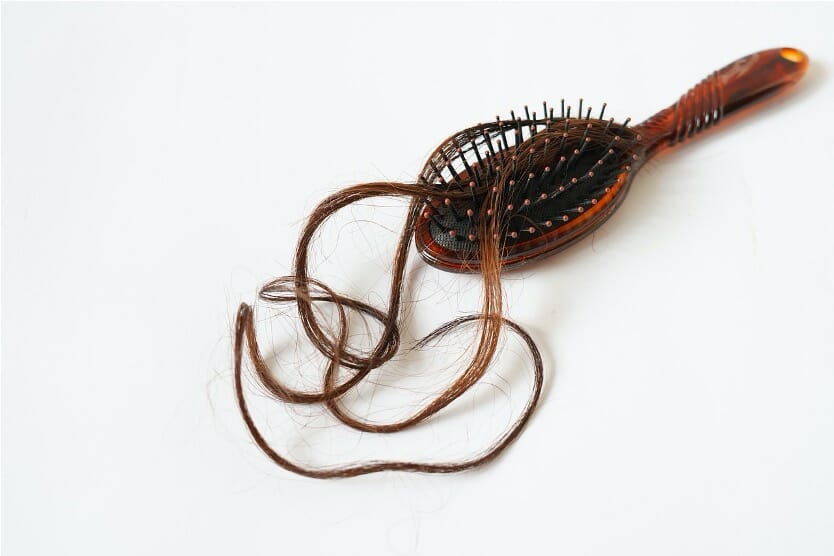Running is a fantastic way to stay fit and healthy. If you’re an avid runner, you’ll want to get back to your active lifestyle after a hair transplant. Generally speaking, we recommend waiting 2 weeks following the hair transplant before recommencing running. Running too soon after a hair transplant carries several risks to your transplant grafts.
When Can You Start Running After a Hair Transplant?
Immediately following a hair transplant, exercise is not safe1. That includes running. You can get up and about from day 1, performing gentle walking. However, the implanted hair follicles are still in the recovery phase. There’s a risk they could become infected or even pop out. It takes 2 weeks for the implanted grafts to secure into your scalp and a further 2 to 3 months for your transplant to fully develop and grow new hair.
That being said, you should be able to start running after 2 weeks. You might feel like you want to go running before this moment.
Even when you start running again, we advise that you take things slowly. You won’t have done any exercise for the previous two weeks or more. Your body will be prone to injury if you push too hard. Starting vigorous exercise earlier than 2 weeks post surgery can cause excessive sweating which can affect your transplant.
Running After Your FUT Hair Transplant
You are able to run 2 weeks after your FUT hair transplant once your stitches have been removed or inspected by your hair transplant surgeon.
Can You Complete a Marathon After a Hair Transplant?
Yes and no. At some point, you will be able to start running and complete a marathon. Usually, after the 2-week mark. But, given the significant downtime of around a month, your body will not be prepared to run the full distance. Pushing yourself too hard without enough training time can lead to significant injuries, which will further impede your progress going forward.
It’s best to run a marathon before your procedure. Running a marathon after a hair transplant isn’t a viable option, even for the most competitive runners.
Risks of Running Too Early After a Hair Transplant
What are the risks of running too early after a transplant? Being physically active might sound like a good idea. Keeping your body fit and healthy improves your recovery ability and supports your implanted hair follicles, right? Well, aside from the fact your body needs time to rest, vigorous exercise (including gentle jogging) can affect the viability of the hair follicles.
Here’s why1,2,3:
Prolonged Redness
Redness is a clear sign of inflammation. Following the transplant, it’s perfectly normal to have some inflammation in the scalp from the irritation. It will begin to subside within a few days. However, if you start running after a hair transplant, you can exacerbate the situation. Instead of calming your scalp, you cause it to become further inflamed.
Sweating and Irritation
Running carries a high risk of sweating. Usually, that’s not a problem. Sweat irritates the implanted hair follicles, however, worsening irritation and affecting the viability of the hair transplant. In addition, unless you run on a treadmill, you will also spend significant time in the sun, increasing the risk of sunburn especially if you have your hair transplant in the summer.
You should avoid any activity with a risk of scalp sweat and excess strong sun exposure in the first 2 weeks following the transplant. After a few weeks, your scalp will no longer be at high risk from irritation. Give your body enough time to heal and recover.
Infection
Infection is a significant risk for all surgical procedures. Dust, dirt, and grime can get into the implantation sites, leading to folliculitis (infection of the hair follicle). It’s a major risk to your hair transplant. Excessive sweating leads to an increase in bacteria in your scalp. Plus, there’s an environmental risk depending on where you’re running. Lowering your risk of infection means putting running on hold just for a few weeks.
Dislodging Hair Grafts
Hair follicles take time to become permanently embedded in the scalp. At first, they are extremely delicate and easily dislodged. Vigorous exercise – especially if it involves increased pressure in the head – can dislodge these hair grafts.
Gentle jogging might seem like a harmless activity. After all, you’ve done it hundreds of times before. However, it only takes one accident or vigorous burst of activity to dislodge a hair follicle, affecting the success of the transplant. That’s especially true the more intense the exercise.
We recommend taking things easy for the first 2 weeks. There’s nothing wrong with a gentle walk to give the grafts time to settle.
Straining
As with dislodging hair grafts, straining can cause the implanted hair follicles to “pop out.” You might not think you strain when you run or jog. However, your body strains as it pushes itself upwards. When you’re running uphill or sprinting, there’s a high risk of straining. The more blood rushes to your head, the greater the pressure, and the higher the chance a follicle is pushed out, becoming dislodged. Minimise the risk by leaving intense running to at least 2 weeks after the transplant.
Post-Treatment Timeline
When can you start training for a marathon after a hair transplant? When is the best time to get back to the gym? The answer depends on where you are in your post-treatment timeline. Here’s an overview of the first month or so4:
First 7 Days
Immediately following your hair transplant, you can walk safely. Your surgeon will provide a list of activities you can and can’t do, advising you on when to return to your hobbies. While some gentle walking is okay, it’s best to leave hiking or power walking until 2 weeks have passed.
For active runners, it can be frustrating to sit around so much. The effects of the transplant take time to work as the hair follicles heal.
14 Days After Procedure
After two weeks, it’s time to go running again. Remember, you won’t have done any exercise in the previous two weeks, so take things slowly. Pick a gentle trail and avoid pushing yourself too hard. While the hair follicles are now more secure, there is still a risk of overexertion.
Speak to your surgeon if you want any advice on the best exercises to perform. You should also contact your medical team if you notice any persistent redness or sensitivity of the scalp.
1 Month After Procedure
You can resume contact sports at 1 month post surgery.
Quick Summary
- Wait 2 Weeks Before Running: It’s recommended to hold off on running for at least two weeks after a hair transplant to allow grafts to settle and reduce risks like dislodging, infection, or inflammation.
- Take It Easy Initially: When resuming exercise, start with gentle jogging to avoid injury
- Avoid Marathons Shortly After Transplant: While running a marathon may be possible after the 2-week mark, it’s advisable to wait longer to avoid injury and allow full recovery for both body and hair grafts.
Schedule Your Hair Transplant Today
Connect with our team to explore the benefits of a hair transplant. From your personalised consultation to post-surgery care, we’re with you every step of the way. Begin your journey to fuller, natural-looking hair—book your consultation now and take the first step toward renewed confidence.
References
- Nadimi S. Complications with hair transplantation. Facial Plast Surg Clin North Am. 2020 May 1;28(2):225-35.
- Liu RH, Xu LJ, McCarty JC, Xiao R, Chen JX, Lee LN. A Scoping Review on Complications in Modern Hair Transplantation: More than Just Splitting Hairs. Aesthetic Plastic Surgery. 2024 Aug 23:1-1. Available at: https://link.springer.com/article/10.1007/s00266-024-04316-3
- Kerure AS, Patwardhan N. Complications in hair transplantation. Journal of cutaneous and aesthetic surgery. 2018 Oct 1;11(4):182-9. Available at: https://journals.lww.com/jcas/fulltext/2018/11040/complications_in_hair_transplantation.5.aspx
- NHS. Hair Transplant. Available at: https://www.nhs.uk/conditions/cosmetic-procedures/cosmetic-surgery/hair-transplant/
Share:
Authored by
Reviewed by
Book a Consultation
Related Blogs
Andros Townsend Transplant: Before, After, and His New Hairline
March 11, 2025
He’s best known for his days spent kicking a ball around, but Premier League footballer Andros Townsend…
Harry Kane Hair and Hairline
March 11, 2025
Harry Kane has suffered from a common condition of hair loss called male pattern baldness. This has…
Joe Swash Transplant: Before, After, and His New Hairline
March 11, 2025
Former ‘EastEnders’ actor and ‘I’m a Celebrity’ contestant Joe Swash has spoken very candidly about receiving multiple…
Guide To Finasteride For Hair Loss
March 4, 2025
One of the main effective medications in treating hair loss is Finasteride, which is often prescribed to…
When Can You Safely Wear a Beanie After a Hair Transplant?
March 1, 2025
Quick Summary Cap Recommendations: Light, breathable caps like snapbacks or trucker’s caps are advisable if you need…
Dutasteride and Hair Loss
February 23, 2025
Dutasteride is a medication that can be prescribed to men suffering from male pattern hair loss (androgenic…
Receding Hairline In Women – What You Need To Know
February 20, 2025
Quick Summary What is a Receding Hairline? In women, a receding hairline is often more subtle than…
Norwood 2 Hair Loss And Hair Transplants
February 20, 2025
Norwood 2 is a specific stage of hair loss that forms part of the Norwood Scale. During…
Can You Get A Buzz Cut After A Hair Transplant?
February 19, 2025
Quick Summary: Buzz Cut After Hair Transplant What is a Buzz Cut?: After a hair transplant, a…










